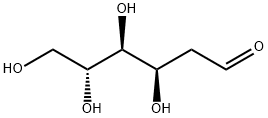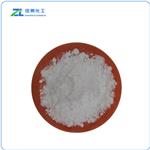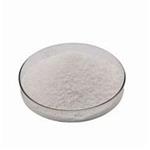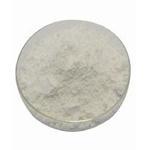
2-Deoxy-D-glucose
- Product Name2-Deoxy-D-glucose
- CAS154-17-6
- CBNumberCB0251338
- MFC6H12O5
- MW164.16
- EINECS205-823-0
- MDL NumberMFCD00151328
- MOL File154-17-6.mol
- MSDS FileSDS
Chemical Properties
| Melting point | 146-147 °C(lit.) |
| alpha | 45.5 º (c=2, H2O) |
| Boiling point | 211.61°C (rough estimate) |
| Density | 1.1738 (rough estimate) |
| refractive index | 46.5 ° (C=1, H2O) |
| storage temp. | 2-8°C |
| solubility | H2O: 50 mg/mL, clear, colorless to faintly yellow |
| pka | pK1:12.52 (25°C) |
| form | crystalline |
| color | white |
| optical activity | +38.5 → +45.9 |
| biological source | synthetic |
| Water Solubility | Soluble in water. |
| Merck | 14,2904 |
| BRN | 1723331 |
| Stability | Stable for 1 year from date of purchase as supplied. Solutions in DMSO may be stored at -20° for up to 1 month. Solutions in water are not stable and must be used within 1 working day. |
| InChIKey | PMMURAAUARKVCB-CEZCPVKQSA-N |
| LogP | -1.460 (est) |
Safety
| Symbol(GHS) |

|
|||||||||
| Signal word | Warning | |||||||||
| Hazard statements | H315-H319 | |||||||||
| Precautionary statements | P264-P280-P302+P352-P337+P313-P305+P351+P338-P362+P364-P332+P313 | |||||||||
| Hazard Codes | Xn,Xi | |||||||||
| Risk Statements | 20/21/22-36/37/38 | |||||||||
| Safety Statements | 24/25-37/39-36-26 | |||||||||
| WGK Germany | 3 | |||||||||
| RTECS | MQ3325000 | |||||||||
| F | 3-10 | |||||||||
| TSCA | Yes | |||||||||
| HS Code | 29400090 | |||||||||
| Hazardous Substances Data | 154-17-6(Hazardous Substances Data) | |||||||||
| NFPA 704: |
|



